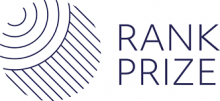The largest source of research funding to agriculture, plant, animal & natural sciences in the UK is UKRI, encompassing BBSRC, NERC & Innovate UK.
You can track relevant funding opportunities at KTN's Agrifood webpage - ktn-uk.org/agrifood/
Defra is supporting an exciting new programme of funding with its Farming Innovation Programme aiming to bridge between farm, applied and fundamental research. Support for agricultural research and development is devolved, with specific funding routes available in Scotland, Wales and Northern Ireland.
The Levy Bodies support lots of applied research for the benefit of the industry - AHDB, PGRO, BBRO.
Commercial companies in the ag industry support substantial amounts of private research, conducted internally and externally. Many such companies are represented by AIC - the Agricultural Industries Confederation. Companies with substantial research budgets for agricultural R&D include BASF, Syngenta, Bayer, Corteva, Yara, CF, John Deere, Agrii, Frontier, Hutchinsons, Agrovista. In addition, companies at the other enf of the supply chain often support research and KE programmes, studies and reports, including Tesco, Sainsbury's, Waitrose, ASDA, M&S, Morrisons, Pepsico, Nestle ...
Support is also available from organisations with interests over the landscape, such as water companies with Catchment Sensitive Farming. Natural England and ELMS Test & Trials.
UK Researchers and organisations are still elligible to be part of collaborative EU projects under various schemes including Horizon Europe, EIP-Agri, Thematic Networks, Intereg and Eureka.
The Charity sector also plays an important role in supporting the knowledge landscape in UK agrifood, both from large charities like WWF, Soil Association, Prince of Wales' Charitable Fund and smaller agricultural charities often addressing local KE needs, represented by the Agri-Food Charities Partnership. The Morley Agricultural Foundation is one of the larger ag charities.
For Agri-tech, there are an increasing number of companies and funds looking to invest in agricultural innovations - eg AgFunder Grosvenor Food & AgTech (was Wheatsheaf).
Government Grants for Farming
In 2023, more than £168m of funding will be available through a variety of grants.
Visit the gov.uk web page for more information.
Let the community know about other funding sources or useful links and resources in the comments box below.











